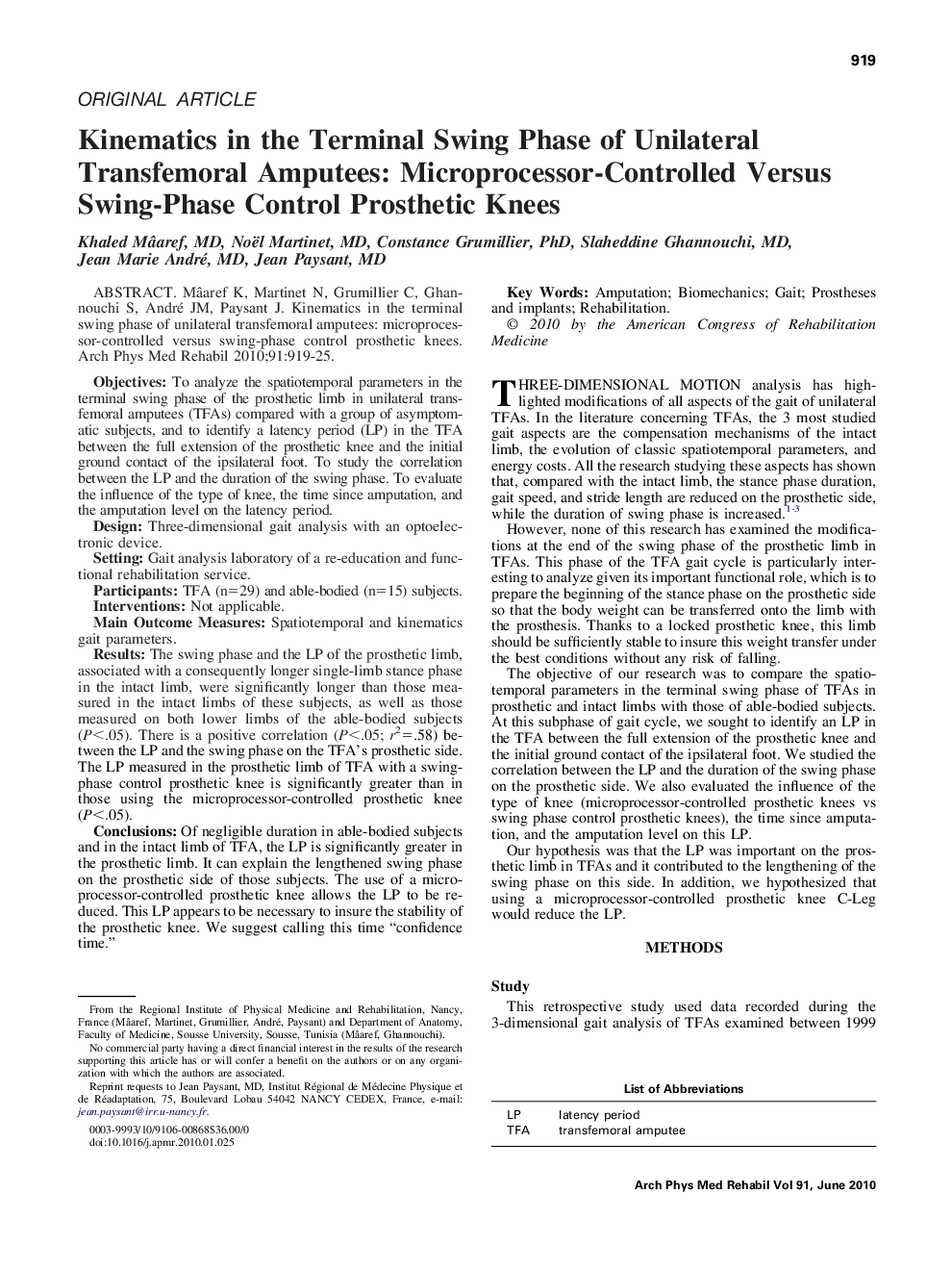| Article ID | Journal | Published Year | Pages | File Type |
|---|---|---|---|---|
| 3451154 | Archives of Physical Medicine and Rehabilitation | 2010 | 7 Pages |
Mâaref K, Martinet N, Grumillier C, Ghannouchi S, André JM, Paysant J. Kinematics in the terminal swing phase of unilateral transfemoral amputees: microprocessor-controlled versus swing-phase control prosthetic knees.ObjectivesTo analyze the spatiotemporal parameters in the terminal swing phase of the prosthetic limb in unilateral transfemoral amputees (TFAs) compared with a group of asymptomatic subjects, and to identify a latency period (LP) in the TFA between the full extension of the prosthetic knee and the initial ground contact of the ipsilateral foot. To study the correlation between the LP and the duration of the swing phase. To evaluate the influence of the type of knee, the time since amputation, and the amputation level on the latency period.DesignThree-dimensional gait analysis with an optoelectronic device.SettingGait analysis laboratory of a re-education and functional rehabilitation service.ParticipantsTFA (n=29) and able-bodied (n=15) subjects.InterventionsNot applicable.Main Outcome MeasuresSpatiotemporal and kinematics gait parameters.ResultsThe swing phase and the LP of the prosthetic limb, associated with a consequently longer single-limb stance phase in the intact limb, were significantly longer than those measured in the intact limbs of these subjects, as well as those measured on both lower limbs of the able-bodied subjects (P<.05). There is a positive correlation (P<.05; r2=.58 between the LP and the swing phase on the TFA's prosthetic side. The LP measured in the prosthetic limb of TFA with a swing-phase control prosthetic knee is significantly greater than in those using the microprocessor-controlled prosthetic knee (P<.05).ConclusionsOf negligible duration in able-bodied subjects and in the intact limb of TFA, the LP is significantly greater in the prosthetic limb. It can explain the lengthened swing phase on the prosthetic side of those subjects. The use of a microprocessor-controlled prosthetic knee allows the LP to be reduced. This LP appears to be necessary to insure the stability of the prosthetic knee. We suggest calling this time “confidence time.”
